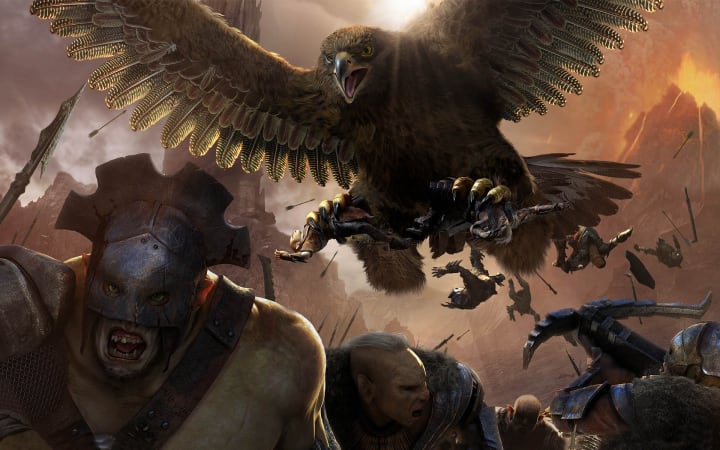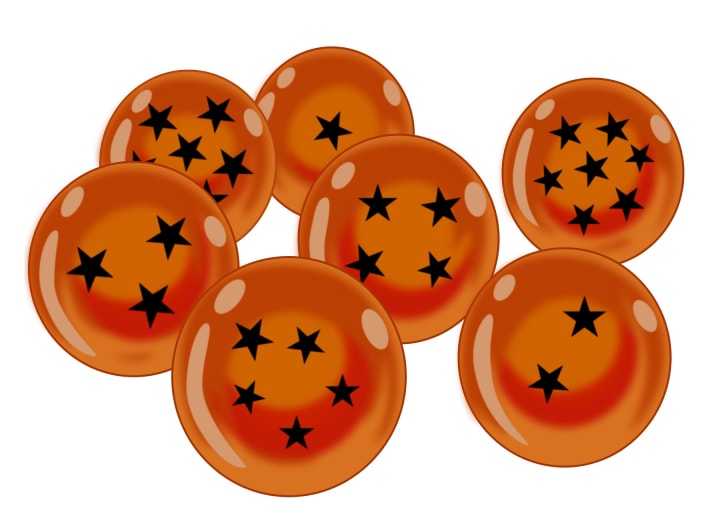The McGuffin Problem
Examining the Problems with Hollywood's Formula

We’ve all heard of it before, the plot device, the McGuffin, or the Deux Ex Machina. It’s that one story element that the protagonists are searching for, trying to activate, kill for, or even destroy. But in the end, it ultimately serves one purpose, to move the story forward.
McGuffins are a classic literary tool common in storytelling. They’ve risen to prominence in the last few decades spawning some of the most iconic and well-known McGuffins embedded deeply in our pop culture: The Infinity Stones, The Arc of the Covenant, The One Ring, The Delorean Time Machine, etc.
But, with its rising use in stories, storytellers have started to develop nasty habits when it comes to their plot devices and McGuffins, resulting in a string of repetitive cliches, bland third acts in films, and dozen of plot holes or instances of lazy writing where these Deus Ex Machinas solve all of the protagonist’s problems without even trying. And with the rising trend of superhero films as well as the plentiful reboots that have emerged, these problems have been recurring more than ever before.
The purpose of this is to analyze what goes wrong with the reliance of these powerful devices and finding a way to fix them while approaching them differently from a humble nerd and learning writer's perspective.
Before we get started, it is important to distinguish the difference between a McGuffin and another similar trope such as the Ex Machina, both of which tend to get confused for one another and get tossed around often.
Ex Machinas usually appear at the climax of your story, functioning as a last minute ordeal or object that is intended to get your protagonists out of impossible situations, such as death, without any early indication of their existence. In other words, if it was never built up, never mentioned before, and such events or device simply come out of nowhere, then it is in fact considered to be an Ex Machina.
Now, McGuffins or plot devices, on the other hand, are narrative goals or objects that the characters are pursuing or are motivated by. The effect that the McGuffin may have on the plot isn’t as important as the effect it has on the characters and their motivations. Usually, we see them represented as locations, people, or a physical object. And other times they’re some abstract type of motivation such as love, victory, glory, etc.
The type of McGuffins that we’ll be focusing on, however, will be the magical world ending ones found in fantasy and geek culture.
Now that we’ve cleared up what distinguishes the two, let’s look at the big problem that surrounds these magic based McGuffins.
You see, this variation of overpowered plot devices are sometimes present earlier throughout the entire story. This wouldn’t be a problem, except that when the McGuffin is a tool or person that allied with the protagonists, their versatility can lead to a lot of dilemmas and several plot holes, or even worse, losing the stakes in the story entirely.
A common example of this type of device would be the case of Gandalf’s Great Eagle companions from Lord of the Rings, who he commanded to help Frodo and his friends to escape Mt. Doom. In The Hobbit, the Eagles also save Bilbo, Gandalf, and the dwarves from the Goblins and wolves. And they also help turn the tides in The Battle of the Five Armies. To say that they’re an overpowered plot device would be an understatement at that point.

The Great Eagles from Lord of the Rings Attacking a Horde of Orcs from the Battle
So the solution here seems simple, right? Just don't use them! But what happens when these narrative devices are ignored?
This was the case in Return of the King, as many fans were left stumped speculating that the Eagles could have flown the Hobbits at the top of Mt. Doom to begin with, thus avoiding the treacherous journey there, but they simply didn’t. It’s had a lot of fans debating and concocting fan theories to this day.
Surprisingly, J. R. R. Tolkien himself was even aware of how problematic these creatures could be in his story as he referred to them as a “dangerous machine” in a letter he published in his book “The Letters of J.R.R. Tolkien” directed towards the future crew that would eventually adapt his books into films.
The Eagles are a dangerous 'machine'. I have used them sparingly, and that is the absolute limit of their credibility or usefulness. — J.R.R. Tolkien on flying the One Ring to Mount Doom
Another more modern example would have to be the chaos emeralds from the titular Sonic the Hedgehog video game series. These mystical gems started out as a game mechanic that rewarded the player for collecting them through arduous special stages to unlock the secret ending. So in terms of a game mechanic, they were always intended to gift the player the elevated state of Super Sonic to essentially break the game. That was kind of the whole point, especially when you tend to collect these items by the end of your playthrough.
However, when the series began telling more thought out stories that simply didn’t boil down to “Sonic saving the day,” the emeralds were utilized as an essential plot device. But because there were unlimited by nature, the writers started giving these McGuffins various ridiculous abilities with each game or iteration. Whether it was powering machinery, teleportation, controlling time, traveling through time, repairing pieces of the planet, or creating giant lizard monsters, the possibilities with these things became insane.
The fact that they could even allow you to travel through time at will was one of the many reasons people criticized the story of the 2006 entry titled Sonic the Hedgehog, arguably the worst story and game entry in this series as a whole. Because, if you can travel through time at will, then that could’ve solved pretty much all of the problems of the main characters at any point during the story. But surprise surprise, they never capitalize on this.
One well known extreme example of this is when McGuffins like these can cause some problems with ongoing series which can make it easy for writers to essentially write themselves into corners with them scrambling to find ways to solve this.
The Dragon Ball franchise suffers from this stigma, as the titular McGuffins have been used countless times to get the main characters out of any sticky situation. So much to a point where death has become irrelevant. Seriously, whenever a character dies, you never break a sweat, because you know for a fact that they’re going to bring them back with the Dragon Balls.
The writers, later on, tried to rectify this problem by attempting to give the balls rules to limit the type of wishes made. But none of that mattered as the series progressed, because they kept making up more balls that were much more powerful than the originals, capable of granting more wishes without limitations.




But audiences as of recent have become weary of this trope, catching on how repetitive and ridiculous they continued getting with each subsequent blockbuster. And honestly, I can’t blame them. It does get tiresome watching nothing but flashing lights with an overabundance of CGI tossed at your face.
With a television series, however, the reasons are slightly different as it can come down to marketing. In animes, especially the popular brands like Pokemon or the aforementioned Dragon Ball series, these world-ending MacGuffins or plot devices exist to promote the next big thing. In the case of Pokemon, it’s always some cool new legendary creature that can spawn multiple films, trading cards, and of course, promote the main games to boost sales. And in the case of Dragon Ball, these exist for the same reasons, although usually to promote the return of favorite characters, a new transformation, or some big event to attract more viewers.

Goku as Seen in the Recent Arc of the Dragon Ball Super Series Sporting a New Form, Ultra Instinct
Now, I’d like to stress that there’s nothing wrong with enjoying these types of stories. I’d be a hypocrite myself to think so. I am actually a Dragon Ball fan, and I admit that it’s nice to turn off your brain and just enjoy the madness in front of you.
I’m a sucker for raw action and these Ex Machina or McGuffin based transformations and abilities that these characters basically pull out of nowhere. It’s fun, it gets my adrenaline going even if it can sometimes be dumb or outright stupid, but that’s part of Dragon Ball’s charm. Sure, it doesn’t make sense but fuck it, it’s not gonna stop me from having a good time.
I also believe that this series, in particular, gets away with these types of tropes because it’s arguably the anime that started it. The beam struggles, destructive action, and constant transformations were something that Dragon Ball popularized and continues to celebrate to this day.
But as I said before, most western audiences are growing aware and tired of these story tropes in Holywood productions, more so than in anime where the approach is different.
So, we’ve discussed briefly how these McGuffins can create glaring issues in your story. They’re either too powerful that they can conveniently fix all of your protagonists' problems robbing the stakes away, and if you don’t use them to solve said problems, you start to question the character's intelligence while creating inconsistencies or plot holes. The biggest offender here is that all of your resolutions will become the same: Formulaic, repetitive, and cheap.
So how does one go about to fix this dilemma? Well, some stories actually have found a solution to this, but you don’t see it very often. The way that I’ll put this into perspective will be in what I like to call:
The Broken Stopwatch Rule:
Imagine this. The main character of your story has a stopwatch. This is no ordinary watch, though. It has the ability to control the time at will, be it by stopping it, reversing it, going fast forward and perhaps even traveling through it. It’s a powerful device that you can use to do pretty much anything in the confines of time travel and works on whoever possesses it.
But here lies the problem; it’s too powerful. Sure, you could construct a time-traveling story around the idea, or find ways that the main protagonist has trouble controlling the watch, but let’s take this a step further.
Let’s just break the stopwatch. That’s right, smash it.
Now, in a broken state, let’s say that this stopwatch can only stop time, but for only five seconds. Ten, if it’s working good enough that day. And that’s it. All of its time manipulating powers have been reduced to stopping time in mere seconds.
But how’s this any better? Well, with the stopwatch broken we don’t have access to all of its story breaking functionalities. Thus, our protagonist now has to find different ways to make better use of this broken stopwatch. In other words, we’ve given the McGuffin limitations.
If a McGuffin is too powerful and makes your protagonist's life easier, then it is surely not a good narrative device to begin with. And let’s be honest, being able to do whatever you want or becoming overpowered can be a bore to watch. Instead, I think it’s best to challenge yourself and your protagonists with limitations.
But what could one possibly do by stopping time for five or ten seconds? Well, let’s take some pages from some fantasy and fiction stories and see what they did.
Remember the stasis ability from the video game Zelda Breath of the Wild? Yeah, something like that. What if when we stop time, kinetic energy is stored in objects to later blast away when time resumes? The possibilities of this idea are endless. If our main protagonist throws a punch and stores the energy, the impact will be doubled. He could probably move and blast objects twice his size, and it could be an effective ability in combat to take out enemies bigger and stronger than him or her.
But with a little bit of outside thinking, this ability can do much more. Need a ride? Easy, find a boulder, beat the crud out of it to build that energy, hop on, and blast off! Need vertical momentum to reach a super high cliff? Just get a pole, stop time, slam the opposite end to build up that sweet energy, and vault at the right moment to send yourself flying upwards. And this is just some of the stuff I’m spitballing right now. There’s probably more you could do with enough imagination.
Isn’t that just much more interesting, though? Yeah, manipulating time is also pretty cool and there have been plenty of movies and shows that prove so, but when you add limitations, when we break the stopwatch, we basically took this powerful McGuffin and started using it in unorthodox ways.
This, I believe, makes for a more engaging narrative and easily raises the stakes. It can also add an unpredictable twist to the traditional conventions of these McGuffins resulting in better endings and third acts to your story. Additionally, with limitations, it pushes your protagonist to demonstrate how intelligent and astute he/she can be to get themselves out of impossible situations.
A common example of this Broken Stopwatch philosophy is in the story of Aladdin. We know how it goes. Aladdin gets a hold of the magic lamp containing the Genie and wishes to become a prince to get the girl. But the lamp is a perfect broken stopwatch in and of itself.
The rules are that whoever owns the lamp becomes his master and gets three wishes granted, with additional rules added on top:
- Can't Kill
- Can't make anyone fall in love with you
- Can't bring back people from the dead
Already, we have a set of rules that could be potentially exploited in several ways.
So later in the film, the lamp is stolen and is in the hands of Jafar, the main villain. During the climax, Aladdin confronts the evil Sorcerer in an attempt to get the lamp back, because as we know, whoever has the lamp in his possession becomes his master.
At one point, they use one of the pre-established rules to trick Jafar into thinking he wished Jasmine to fall in love with him, giving our protagonist more time to get the lamp. Already, that’s a good first example of using the McGuffin’s rules to his advantage.
But alas, Aladdin fails at getting the lamp back as Jafar proves to be too powerful for the likes of him. Well, what else is there left to do?
In a moment of pure brilliance, Aladdin realizes he can’t beat Jafar by his own rules, so instead he opts to use the lamp’s rules against him, tricking Jafar by appealing to his ego to wish himself into a Genie. But, of course, in doing so, he traps himself in a lamp for all eternity. And thus Aladdin has defeated the villain, by not using the McGuffin as we expected, without a run of the mill resolution of good conquering evil with love, or a giant over the top sequence with blinding lights. It was just a matter of, once again, effectively using the McGuffin's rules and limitations to his advantage.
I believe that this Broken Stopwatch philosophy of adding limitations to your dangerous devices challenges writers to find better and creative ways to resolve their stories, thus subverting our expectations and gracefully demonstrating how smart and effective our main protagonist can be at the face of greater odds.
Thankfully, even several comic book films seem to be learning from their mistakes as some have started to employ similar variations of this idea. In Dr. Strange, for example, a Marvel movie of all places had what I thought was the most brilliant resolution that I’ve seen in a long time to what could’ve been another run-of-the-mill third act in a comic book film.
So what happens? Well, basically, this god-like entity named Dormammu is about to cross to our dimension to invade it. All hope is lost and Dr. Strange is left with little options. The only thing that he has at his disposal is the McGuffin of this story, The Eye of Agamotto, a medallion that gives him the ability to control time. Sound familiar?
In this instance, however, the broken aspect of the eye would be applied to Strange’s inexperience in using the medallion, as earlier in the film he barely seems to grasp its ability to reverse time for a couple of minutes. He’s not well acquainted yet to use the eye at its full potential. So what can he do?
With an epiphany, Strange concocts a plan as he confronts the powerful being, uttering the now iconic phrase: “Dormammu, I've come to bargain.”
So what’s his plan? Strange creates a small time loop between him and Dormammu, trapping them in the span of a minute. Meaning that no matter how many times Dormammu kills Strange, time will just reset with Strange coming back and Dormammu unable to escape, thus conquering our realm.
Dormammu begrudgingly gives in and retreats back to the dark dimension along with his followers. Strange basically stood up to a God and tricked him into surrendering by using his wits rather than brute force or by stopping some plot device in ways that we’ve seen done a million times. He subverted our expectations by using said plot device in a way we didn’t anticipate, and I love it!
It was such a refreshing and fun way to create an intriguing third act and it fits well with the overall theme of the film that proves that sometimes rules need to be bent for the greater good, just as the ancient one had advised Strange right before her death.
So if we could bend the rules of these MacGuffins, break the stopwatches, then that would be what I believe to be a step in the right direction of fixing the bigger picture here. These inconsistencies or plot holes would most likely not exist, but better yet, we could get better third act endings.
No more power of love, no more over the top CGI scenes of any of these overused tropes we see constantly in film and media. We can have better resolutions to our stories if we think outside of the box for a bit and use the limitations to our advantage.
And if your McGuffin doesn’t have them, then, as I said, break the stopwatch; give it limitations. A character doesn’t have to be powerful to prove that he’s competent or even win the respect of the viewer. Sometimes, a series of mind games or unorthodox ways of getting things done can be just as good if not, even better at proving your point.
But of course, as I mentioned at the beginning of this article, McGuffins come in different flavors, not just as powerful world-ending devices. In those aforementioned instances, different solutions or methods are implemented.
If you’re curious to hear more about these other solutions to story McGuffins, I suggest you check out the YouTube channel Just Write and his video "How McGuffins Can Ruin Movies." This video does an excellent job of exploring the various types of story McGuffins in successful and influential films that did it best and I had no time to cover and was my inspiration to conceive this article.
So tell me, what do you think of this philosophy? Would you like your stories to think outside the box more often? Or are you satisfied with them just being the simple, safe, and fun storylines using the McGuffins we’ve seen before? Do you think that these McGuffins ruin your enjoyment of the story? Or do you simply not care?
As always, thank you for reading and I'll see you on the next one.
About the Creator
Jose Gabriel
I'm a storyteller in training from Toronto. I like to write about different things that inspire me. As long as I'm creating something that entertains people I'll always be happy with what I do, be it short stories, serials, scripts etc.







Comments (1)
I like reading https://www.google.com